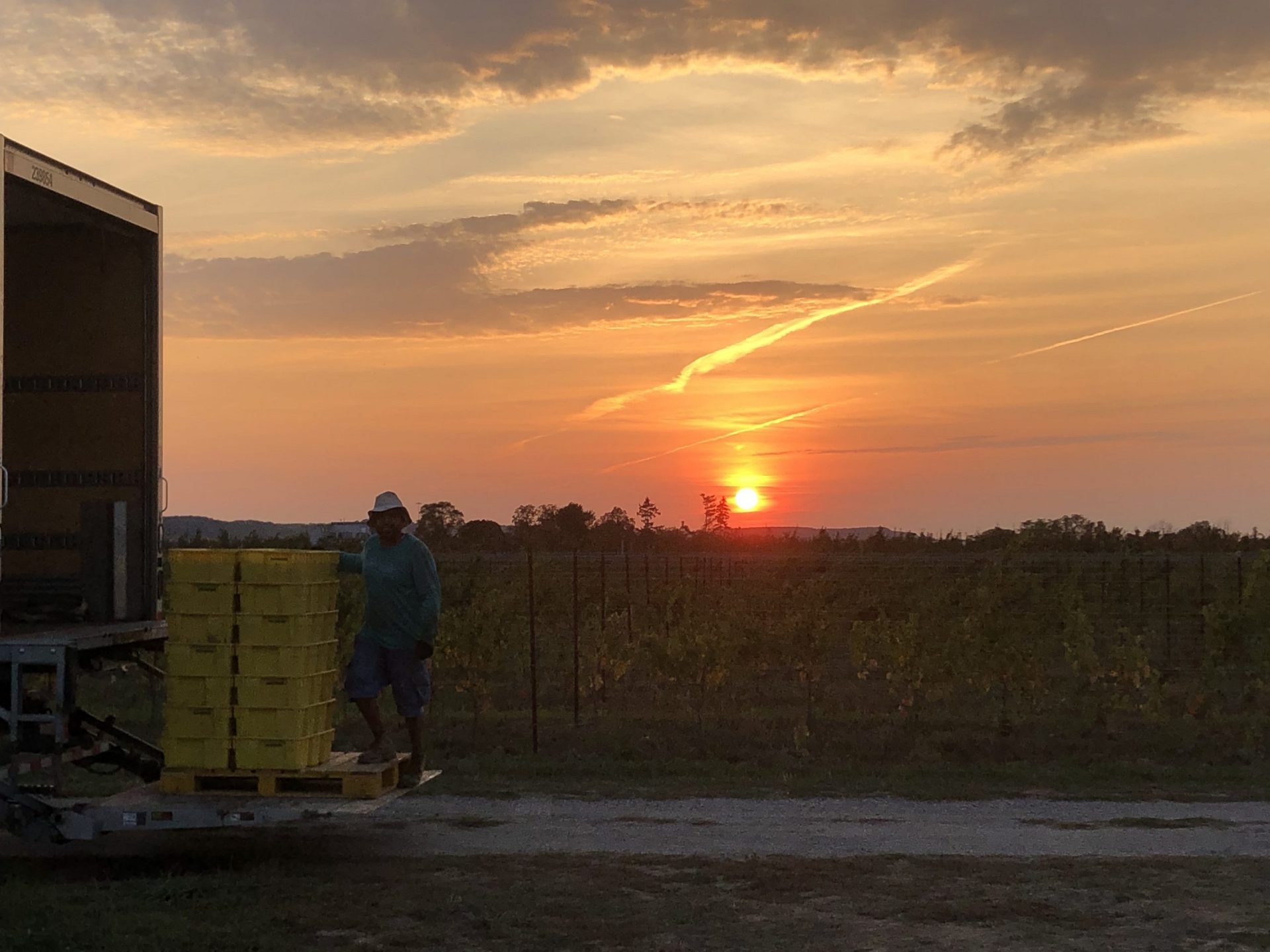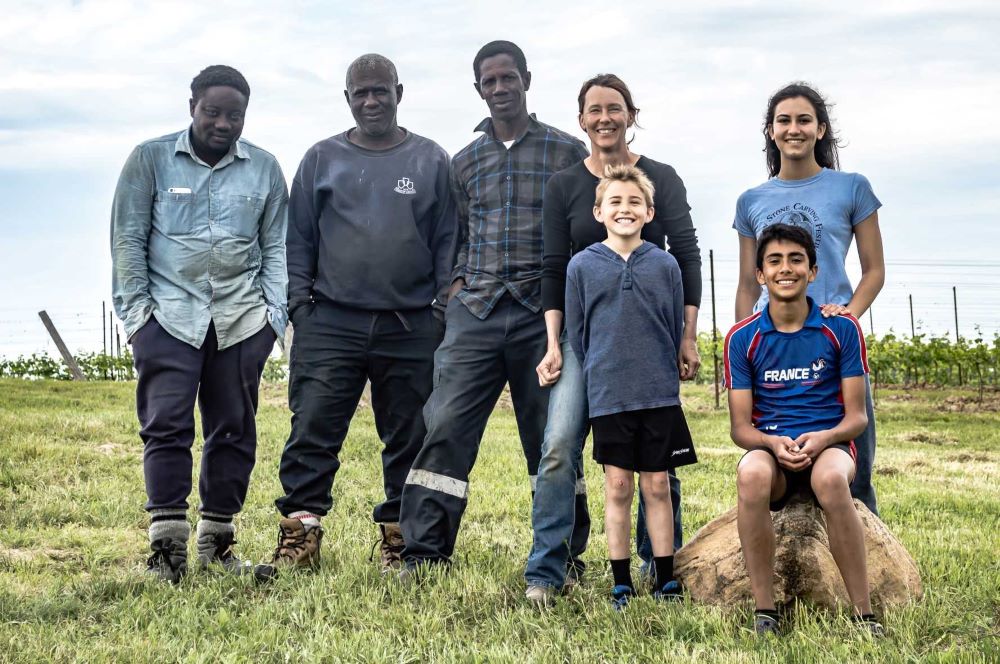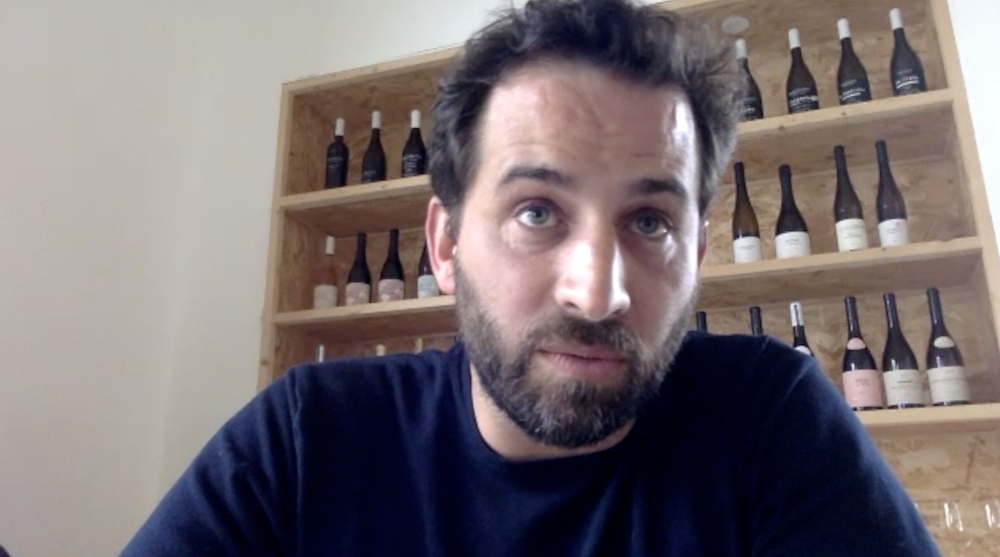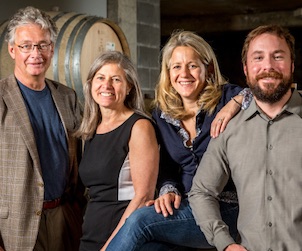
Heather Laundry with her vineyard crew, kids included.
Single vineyards can deliver delicious wines. They are frequently the peak of a winery’s tier of offerings. They often signal complexity, age-worthiness, and in many cases fetch significantly higher prices than wines blended from several vineyards. Indeed some of the world’s best wines are single-vineyard bottlings, as with Burgundy’s clos vineyards. But can’t single vineyards be something more than unicorn bottlings most of us will never own or taste?
At its core, the single vineyard concept is a window into the soul of a particular spot of earth, terroir said with affection instead of reverence. Thanks to our still burgeoning wine regions, we have a plethora of single vineyards that turn out delicious, exciting, and often complex wines. Bonus points – they’re all very accessible. I wanted to look at these named vineyards with the same analytical eye that I have been more accustomed to applying to established wine regions in Europe. However, I’ll leave the stage-parent impulse to talk crus and quality pyramid schemes out of this particular discussion.
The Vineyard
Organic grape farming is so daunting in humid regions that you have to be brave to forge ahead through our humid summers and wet winter snows. No wonder then that organic viticulture is a slow-moving endeavour in our local wine regions despite growing consumer interest in organic wines and the moral imperative of staving off impending climate doom.
Heather Laundry is one such undaunted grower who has been farming grapes organically for twenty odd years. She has exacting standards of her vines, noting that she expects them to look and behave just as well as those of a conventionally farmed vineyard. Through speaking with her, it’s clear that her meticulous eye for detail and dedication to farming are why her vineyards are thriving.
She has three vineyards; two on the Lincoln Lakeshore and her homestead vineyard in Vinemount Ridge. I’ll focus on her Home Vineyard here.
The Vinemount Moraine is the leftover footprint of a glacier’s trudging path. The debris of glacial streams that ebbed and flowed into Lake Ontario dominates the landscape. Heather’s Home Vineyard is located here atop the rolling hills of the Moraine. If you’re getting super nerdy, the soils are called Oneida soil – a rich clay loam till mixed up with glacial matter. The glacial deposits break up the soil and improve water drainage from the slopes, while the rolling hills themselves keep cold air from settling onto the vines in the cooler months. Both of these factors moderate the growing conditions for the vines. The site is dry-farmed, leaving mother nature in charge of water levels each vintage.

Sunset over the Laundry Home Vineyard.
The Vignerons
Heather Laundry collaborated with Ann Sperling, the winemaker of Southbrook Vineyards, to hone in on which Vinifera varieties would best maximize the potential of this terroir, as each face and curve of the hill has a different relationship with the sun. Heather and Ann carefully matched each grape variety to the personality of each slope and oriented the vine rows to manage the sunlight that falls on the grapes. Gamay and Riesling are the two main plantings here, along with a smaller parcel of Vidal.
Gamay takes a north-facing hill where it enjoys indirect sunlight. Planting on a north-facing slope lengthens the growing season for Gamay well into September. The cooler fall temps help preserve all those lovely aromatics without allowing the grapes to become blowsy with sugar.
The duo took a unique approach when planting the Riesling. The vines are planted on an east-facing slope with vines rows running east to west. The Riesling vines meet the full intensity of morning sun head-on but cool off as the light becomes indirect during the hottest part of the day. Heather and Ann selected Clone 21 Riesling to plant since the grape has a long track record of producing excellent wines in Niagara. This particular clone originates from the Mosel Valley, Germany. Hermann Weiss introduced it in the early 1970s when he planted the St. Urban’s Vineyard at Vineland Estates.
A small parcel of Vidal was already established on the site when Heather Laundry took on the farm. These grapes go into Southbrook’s Skin Contact Vidal bottling.
Beyond the question of clones, there were also decisions to make about which rootstocks to plant the vines on. That particular facet of viticulture generally flies over heads and isn’t focused on by sommeliers, but for Heather Laundry, it’s the foundation of quality. Rootstocks naturally lower in vigour limit the amount of tinkering needed above ground, thus directing the vine’s efforts into fruit production instead of leafy canopies.
Terroir in the Glass
Gamay does well on this site because the quality of the soil is a perfect foil for Gamay’s tendency to produce an abundance of fruit. The naturally well-drained slopes encourage smaller berries so that the ratio of sweet juice to the skins containing tannins and other flavour compounds is better matched. The resulting wines have a great depth of colour, extract, and body. In short, this is a vineyard that can deliver complex Gamay.
Riesling here shows all the classic notes associated with the grape. Balanced acidity accompanies fresh citrus and orchard fruit flavours. Winemaker, Ann Sperling, notes that Riesling’s trademark petrol note develops with only a short year or two in bottle – a reflection of the ample sunlight on the grapes.
The Wines
Heather’s vineyards have been the source for several Tawse and Southbrook bottlings over the years. Presently, Southbrook has her complete supply of grapes from all three vineyards, which go into blends as well as several single-vineyard bottlings.
The three wines below all come from the Laundry Home Vineyard and are currently available on Southbrook’s website:
 2018 Laundry Vineyard Gamay
2018 Laundry Vineyard Gamay
2018 Laundry Vineyard Riesling
2020 Skin Fermented Vidal







